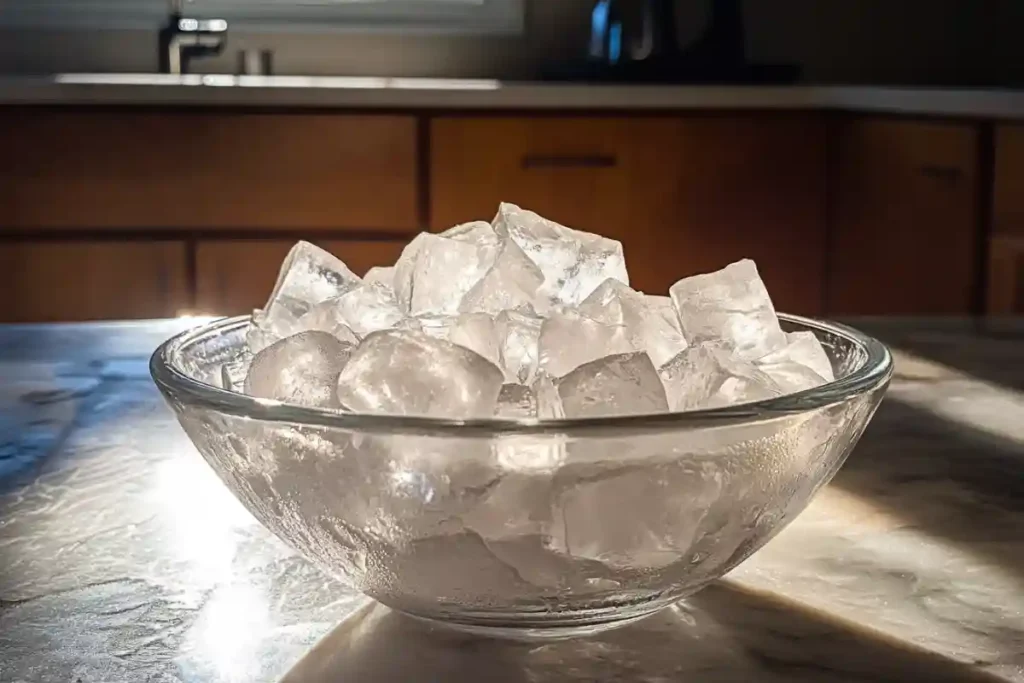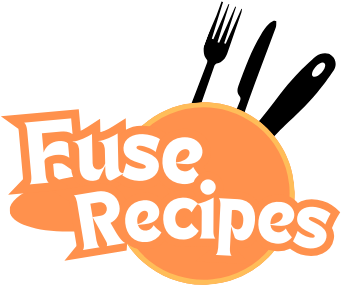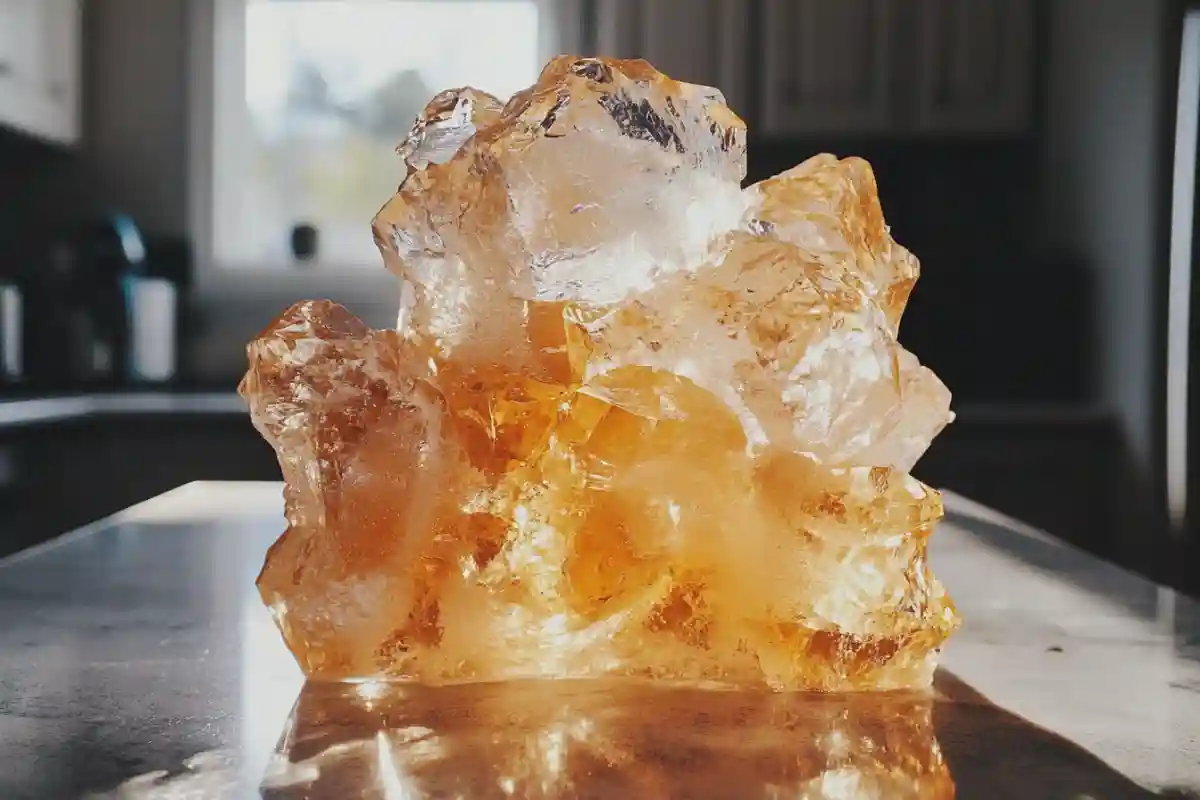Ice chips are a refreshing and versatile option that can help hydrate, soothe, and provide a cool relief in a variety of situations. Whether you’re dealing with a hot day, recovering from a procedure, or simply craving a crunchy treat, frozen chips are a great choice. In this comprehensive guide, we’ll explore the many uses and benefits of these frozen bites, how to make them, and answer some frequently asked questions.

What Are Ice Chips?
Ice chips are small, fragmented pieces of ice created by breaking down larger blocks of ice into smaller, bite-sized chunks. These chips are typically used to cool down drinks, provide a soothing sensation during illness or medical recovery, or simply as a snack.Ice Chips in Medical Contexts
Ice chips, or frozen pieces, are often recommended in medical settings for several specific reasons. Let’s dive into how healthcare providers use ice chips and why they can be a beneficial part of medical recovery.
1. Post-Surgery Care
Crushed ice is widely used for patients post-surgery, particularly those who have undergone procedures involving anesthesia. After surgery, many patients experience nausea or are unable to consume liquids normally due to the effects of anesthesia. Sipping on water might be too overwhelming for their system, and thus frozen chunks become an ideal alternative. They melt slowly, allowing for gentle hydration without aggravating the stomach.
2. Preventing Dehydration
Dehydration is a significant risk factor for many hospital patients, particularly those who are unable to drink fluids normally. Frozen pieces help mitigate dehydration by providing small but consistent doses of water. Patients who may be experiencing throat issues or recovering from specific types of surgery often find that chewing on ice bits is more comfortable than drinking water directly.
3. Oral Health and Comfort During Cancer Treatment
Patients undergoing chemotherapy or radiation therapy often face oral health issues, such as dry mouth or mucositis (inflammation and ulceration of the mouth lining). Sucking on crushed ice can help alleviate discomfort, keep the mouth hydrated, and reduce the swelling or irritation caused by treatment.
4. Labor and Delivery
For pregnant women in labor, consuming large amounts of fluids might not be advisable due to the potential for complications during delivery. However, staying hydrated is still essential. Ice cubes and frozen chunks are frequently offered to help expectant mothers maintain hydration in a comfortable and easily digestible way.
5. Fever Reduction
In cases of high fever, healthcare providers often recommend frozen chunks to help bring the temperature down. Consuming ice pieces can provide an internal cooling effect, and the sensation of cold can help comfort patients who are struggling with the heat and discomfort of fever.
Flavoring Ice Chips
Though plain ice pieces are simple and effective, you can also add flavor to make them a more enjoyable snack. Here are some creative ways to flavor frozen pieces for a refreshing twist:
1. Fruit-Infused Ice Pieces
- Add your favorite fruit juices, such as orange, lemon, or watermelon juice, into an ice tray.
- Freeze the tray until solid and then break the frozen cubes into small chunks.
- The result will be a refreshing, fruity treat perfect for hot summer days.
2. Herbal Infusions
- Brew herbal teas like mint, chamomile, or hibiscus and pour them into an ice tray.
- Once frozen, smash them into pieces.
- Herbal-infused ice chunks provide a natural way to add flavor, with the added benefits of the herbs used.
3. Electrolyte Ice Chunks
- For individuals who need extra hydration support, such as athletes or those who are ill, adding electrolyte drinks to an ice tray can be highly beneficial.
- Breaking them into small chunks gives you a fun way to get hydrated while replenishing your body with essential electrolytes.
4. Sugar-Free Popsicle Ice Chunks
- You can use sugar-free popsicle mixtures to make frozen bits that are both healthy and fun to eat.
- This is an excellent way to make ice pieces more appealing to children, especially during times when they’re sick and struggling to stay hydrated.
The Popularity of Ice Chips in Diet Culture
In recent years, frozen pieces have become popular in certain diet circles. Many individuals seeking low-calorie snacks turn to ice cubes as an option that provides a satisfying crunch without adding extra calories. While crushed ice isn’t a replacement for nutrient-rich food, it can be a helpful tool for those who want to avoid unnecessary snacking.
1. A Tool for Mindful Eating
For some, ice chunks are a way to practice mindful eating. By focusing on the sensation of chewing and savoring the cold, people can often distract themselves from unnecessary food cravings. Additionally, the slow consumption of ice pieces can help prevent emotional eating by offering a repetitive and soothing behavior that doesn’t involve calorie consumption.
2. Calorie-Free Way to Satisfy Cravings
Chewing on frozen chunks can be a useful strategy for people trying to cut back on snacking, especially when cravings strike between meals. The crunchy texture of the ice can give you a similar sensation to eating crunchy snacks like chips, without the added fats, sugars, or calories.
Safety Concerns with Ice Chips
Although ice pieces are generally safe, it is essential to be aware of the potential safety concerns and risks for specific individuals.
1. Choking Hazard
Frozen chunks can pose a choking risk, especially for young children, the elderly, or individuals who have difficulty swallowing. Parents should supervise young children when consuming frozen bits and offer them in small, manageable amounts.
2. Damage to Teeth
Chewing on ice cubes can potentially lead to dental issues. The hardness of the ice may cause microfractures in tooth enamel over time, leading to sensitivity or even cracks. People with fillings, crowns, or veneers are especially at risk, as these dental repairs can become damaged or dislodged from biting down on ice.
If you enjoy ice pieces but want to reduce potential dental risks, try letting them melt slightly in your mouth before chewing. This can help reduce the stress placed on your teeth.
3. Underlying Medical Conditions
Certain medical conditions may make chewing ice less advisable. For example, individuals with pica—a condition that involves eating non-nutritive substances—may chew on ice excessively. This can lead to dental issues or mask symptoms of other underlying health concerns, such as iron deficiency anemia. If you find yourself craving frozen chunks constantly, consult a healthcare provider.
Ice Chips as a Culinary Element
Interestingly, frozen pieces have made their way into the culinary world as well. They are used by chefs and bartenders alike for unique presentations and as a sensory element for various dishes and drinks. Below are some ways that ice bits have been embraced in the culinary field:
1. Garnish for Cocktails
Frozen chunks make an excellent garnish for cocktails, adding both visual appeal and a cooling effect without watering down the drink as quickly as crushed ice might. The unique texture also adds an element of fun to sipping a cocktail.
2. Enhancing Seafood Platters
Chefs often use ice chips to present seafood, particularly in chilled platters. Not only does it keep the seafood fresh and at an appropriate temperature, but the aesthetic quality also adds to the overall presentation, making the seafood look even more appetizing.
3. Palate Cleansers
In fine dining, ice bits are sometimes served between courses as a palate cleanser, especially when infused with delicate flavors like mint or lemon. These flavored ice chunks can help cleanse the palate and prepare diners for the next course.
Frequently Asked Questions About Ice Chips
1. Are ice chips good for hydration?
Yes, frozen chunks are a great way to stay hydrated, especially for individuals who have difficulty drinking large amounts of liquid at once. They slowly melt in the mouth, providing hydration over time.
2. Can ice chips help with a sore throat?
Yes, sucking on ice pieces can help numb the throat and reduce swelling, providing temporary relief from a sore throat.
3. How do you make ice chips at home?
Making frozen chunks at home is easy. Simply break ice cubes or a block of ice into smaller pieces using a mallet or hammer, and store them in a container.
4. Are ice chips safe for children?
Ice pieces are generally safe for children, but they should always be supervised when eating them. Young children may have difficulty chewing frozen bits safely, which could lead to choking.
5. Can ice chips help with nausea?
Yes, ice cubes can help soothe nausea by hydrating the body slowly without overwhelming the stomach. The cold sensation can also help calm an upset stomach. Unlike regular ice cubes, these bits are much smaller, making them easy to chew and more suitable for various applications, especially in healthcare settings.
In medical scenarios, crushed ice is often used as a means of rehydration for patients who cannot consume liquids in a traditional form due to medical procedures or conditions. The process of sucking or chewing on frozen pieces allows for hydration without overwhelming the stomach.
Additionally, ice chips are commonly used to soothe a sore throat, help manage fever, or provide relief during intense heat. They are also a great way to stay refreshed and hydrated on a hot day.
Benefits of Ice Chips
Frozen pieces are not only refreshing, but they also provide a range of health benefits. Here are some of the most common advantages of incorporating them into your routine:
1. Hydration
One of the most important benefits of crushed ice is its ability to help keep you hydrated. When you chew on small ice pieces, they gradually melt in your mouth, allowing you to consume small amounts of water over time. This is especially beneficial for people who struggle to drink water in large quantities or who are recovering from surgery and can’t drink too much at once.
2. Soothing Sore Throats
Frozen chips are a natural remedy for soothing a sore throat. When you have a cold or an illness that causes throat irritation, small pieces of ice can provide temporary relief by numbing the area and reducing inflammation. Sucking on frozen bits is often easier and more comfortable than swallowing liquids, especially if you have difficulty swallowing due to pain or swelling.
3. Cooling Down During Hot Weather
On hot days, frozen pieces of ice can be a great way to cool down quickly. Whether you’re outside in the sun or feeling overheated indoors, chewing on crushed ice helps lower your body temperature and refreshes you almost instantly. This makes them an excellent option for anyone looking to beat the heat during summer.
4. Post-Surgery Recovery
For patients recovering from surgery, ice bits are often a part of the early recovery process. After certain procedures, doctors may recommend that patients consume liquids in small amounts to avoid nausea or vomiting. Ice chips allow patients to stay hydrated and gradually reintroduce liquids to their system, without putting strain on the stomach or digestive system.
5. Aid for Nausea
For those suffering from nausea, frozen chips can offer relief. The cold sensation can help calm the stomach, while the small amounts of liquid can keep the body hydrated. Crushed ice is often recommended by healthcare providers as a first step when trying to hydrate someone who is feeling nauseous but cannot tolerate liquids.
How to Make Ice Chips at Home
Making ice chips at home is a simple and easy process. Here’s how you can prepare your own frozen pieces for personal use:
Materials You’ll Need:
- Ice cubes or ice block
- A large bowl
- A clean towel (optional)
- A mallet or hammer (optional)
Steps:
- Start with Ice Cubes or a Block of Ice
You can use regular ice cubes from your freezer or, for more substantial chips, use a block of ice. - Wrap Ice in a Towel
If you’re using large blocks of ice, wrap them in a clean towel to prevent the ice from scattering too much while you break it down. - Smash the Ice
Using a mallet or hammer, gently tap the ice until it breaks into small pieces. Be careful not to use excessive force, as this can lead to very fine, crushed ice rather than chip-sized pieces. - Collect the Chips
Once the ice is broken into smaller pieces, transfer them into a large bowl for use. You can use them immediately or store them in the freezer for later.
For easier storage and access, you can also store the crushed ice in a ziplock bag, ensuring they stay fresh and ready for use.
Common Uses for Ice Chips
Frozen pieces have a variety of practical applications beyond just hydrating. Let’s take a look at some of the most common uses for these refreshing bites:
1. Medical Uses
As mentioned earlier, ice chips are widely used in medical settings. They’re commonly given to patients post-surgery or those recovering from illness, as they help keep patients hydrated without overwhelming the digestive system. Healthcare providers often recommend them to ease throat irritation or reduce fever. They are also used to help calm nausea, offering patients a way to ingest fluids without causing discomfort.
2. For Hot Days
On a scorching summer day, crushed ice is a great way to cool down. Simply place them in a glass or a bowl and eat them whenever you need to bring your body temperature down. They’re easy to snack on, and because of their small size, they melt quickly, helping to refresh you faster.
3. Sore Throat Relief
Frozen pieces can provide a cool, soothing sensation when you have a sore throat or a cough. By sucking on them slowly, you can numb the throat and alleviate the discomfort temporarily. They are a low-impact remedy compared to other treatments, making them suitable for individuals of all ages.
4. Snacking
Some people enjoy crushed ice simply as a crunchy snack. While they’re not a meal replacement, they’re a calorie-free way to curb cravings and hydrate at the same time. You can even flavor the ice pieces by adding fruit juice to the water before freezing it, giving you a refreshing treat.
5. As an Ingredient in Beverages
Ice chips can also be used in beverages like iced coffee or soda. Instead of using traditional ice cubes, which might melt and dilute the drink, frozen bits can be a great alternative, as they melt slowly and provide a satisfying crunch without compromising the flavor of your drink.
Who Should Avoid Ice Chips?
While frozen pieces are generally safe for most people, there are a few situations where you may want to avoid them:
- For People with Sensitive Teeth: The coldness of ice chips can cause discomfort for individuals with sensitive teeth or dental issues. It’s best to avoid chewing on ice if you experience any pain.
- Young Children: While it’s usually safe for children to consume ice chips, they should always be supervised. Small children may have difficulty handling ice pieces safely, potentially choking if not given in small amounts.
- People with Certain Medical Conditions: Some conditions, such as those affecting the throat, mouth, or digestive system, may make consuming frozen chips unsuitable. Always consult with a healthcare provider before using them if you have underlying health concerns.
Conclusion
In conclusion, ice chips (or frozen pieces) are not just a cooling snack but a versatile tool with a variety of uses. From providing hydration to soothing sore throats and aiding recovery after surgery, these crushed ice bits offer practical benefits in many aspects of health and wellness. Additionally, they are popular in culinary settings, where they are used to garnish drinks, present seafood, and even cleanse the palate.
While frozen chunks can be a helpful and refreshing way to stay hydrated, it’s important to use them safely—especially around children or individuals with sensitive teeth. Whether you’re reaching for some ice pieces to cool down on a hot day or using them as part of a medical recovery plan, crushed ice can be a simple yet effective addition to your daily routine.
Next time you’re looking for a way to hydrate or refresh yourself, try frozen bits for a satisfying, cooling experience that can be enjoyed in multiple ways. Just remember to use them mindfully, and always consider any specific health needs or conditions that might affect their suitability.
More Delicious Recipes :
Spicy Chips: The Ultimate Guide to a Bold Crunch
Marry Me Chicken Pasta: A Recipe That Will Steal Your Heart

